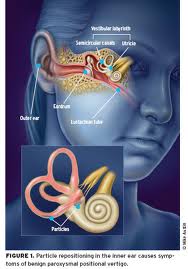BRAINWAVES
Issue 5, Movement Sensitivity (Part 1, Over-sensitive)
With the Red River Exhibition just around the corner, I often think about the rides and the amazing ability of some folks to spin, tip, twirl, drop, swing and go upside down all day long! I used to be able to do that as a teenager…not anymore!! If you can ignore the noise and the visual over stimulation of the Ex, the rides are purely about the sensitivity of your movement or vestibular system.
Brainwaves is a monthly newsletter designed to create some “brainwaves” within my community of colleagues, friends and clients.
In the last issue, I wrote about smell defensiveness and how the human nose is the main organ of smell…and taste! This issue focuses on movement sensitivity and the overlap between movement and sound.
Movement is recognized in our brain in an area right next door to our hearing centre. In fact, our vestibular (movement) system actually is connected to the auditory (hearing) system. In the image below, the movement system is a pink color and the hearing system is a beige color. It is kind of like the two wings of the Manitoba Legislature…joined by the rotunda! They share the same fluid which is what triggers the sensations of movement or sound. So, kind of like the Manitoba Legislative buildings…under water!
The National Inst itute on Deafness and Communication Disorders describes the vestibular system as …”The semicircular canals are three fluid-filled loops arranged roughly at right angles to each other. They tell the brain when our head moves in a rotating or circular way, such as when we nod our head up and down or look from right to left.” This would be like one of the wings in the legislative buildings!
itute on Deafness and Communication Disorders describes the vestibular system as …”The semicircular canals are three fluid-filled loops arranged roughly at right angles to each other. They tell the brain when our head moves in a rotating or circular way, such as when we nod our head up and down or look from right to left.” This would be like one of the wings in the legislative buildings!
The rotunda…or area between these canals and the hearing system (cochlea) holds two fluid-filled pouches tell our brain when our body is moving in a straight line, such as when we stand up or ride in a car or on a bike. They also tell the brain the position of our head with respect to gravity, such as whether we are sitting up, leaning back, or lying down.
The other wing of the building would be the cochlea. It looks like a snail and detects sounds. So, when we hear our favorite song, it enters our ears as sound waves, then transfers into fluid waves which enter our movement and hearing system at the same time. No wonder we want to dance!
http://www.nidcd.nih.gov/health/balance/pages/balance_disorders.aspx#b
Over-sensitivity to Movement
For a variety of reasons, some people/children are over-sensitive to movement. That means that they feel like they are moving a lot when they might only be moving a little. These are not the people you will see at the Red River Exhibition!!
They experience what O.T.’s call, gravitational insecurity. They don’t like to be off the ground and will be hesitant, avoidant, anxious or clumsy on elevators, escalators, swings, steps, walking bridges and even when stepping over something or onto a curb.
Research states that about 15 – 20 percent of children are born with a temperament style that is very cautious and often quite fearful. Elaine Aron coined the phrase “highly sensitive child”, describing them as being very aware and quick to react to everything. Jerome Kagan, who did the early research on infants and young children who appeared sensitive and fearful, called this temperament trait behavioural inhibition (BI). These children will react quickly with a fear response which can result in slowness to try new movement activities or complete refusal.
So Now What?
It is important to recognize that, if triggered, the child’s sense of fear will take over and no new learning will occur. It is important to work hard to not trigger the fear response. Take the situation very slowly; encourage the child to use their sense of vision to guide their movements; use calming techniques in anticipation of this event; begin with moving heavy objects; consider slow repetitive rhythmic movements such as Tai Chi or water aerobics; or swaying in a rocking chair. Firm pressure on the body from hugs and compression devices also help the body to feel calmer.
Read more: Vestibular Activities for Sensory Integration Disorder | eHow.com http://www.ehow.com/way_5418296_vestibular-activities-sensory-integration-disorder.html#ixzz1wfbp7ujL
Some children benefit from sensory integration treatment or listening programs that combine sound and movement activities. See www.integratedlistening.com for more information.
My next newsletter will describe children with under-sensitive movement systems.
Upcoming Workshops
The Attachment Network of Manitoba is very excited to announce that Dr. Dan Siegel will be coming to Winnipeg on November 20, 2012!
http://www.attachmentnetwork.ca/index.php?_a=document&doc_id=31
